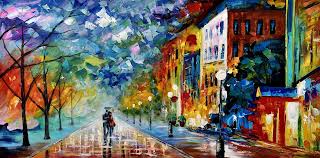Painting is more than a mere application of pigments to a surface; it is an abstracte schilderijen ancient form of expression that transcends time, culture, and emotion. From the intricate murals of prehistoric caves to contemporary abstract pieces, painting reflects the myriad facets of human experience, serving both as a mirror to our world and a canvas for our imagination.
A Glimpse into History
The origins of painting trace back to the earliest days of humanity. The cave paintings of Lascaux and Altamira, created over 15,000 years ago, stand as testaments to the early human desire to communicate and document. These early artworks were not just decorative but also held spiritual and cultural significance, often depicting hunting scenes and animals. As civilizations progressed, painting evolved, influenced by societal changes, technological advancements, and cultural exchanges.
In Ancient Egypt, painting was deeply intertwined with religious and funerary practices. Vividly colored tomb paintings not only decorated the burial chambers but were believed to provide protection and ensure a successful journey to the afterlife. Similarly, the classical Greeks and Romans used painting to enhance their architectural marvels, with frescoes and mosaics showcasing both mythological and everyday scenes.
The Renaissance: A Revolution in Art
The Renaissance marked a pivotal moment in the history of painting. Artists such as Leonardo da Vinci, Michelangelo, and Raphael pushed the boundaries of artistic technique and representation. They introduced perspective, a revolutionary concept that brought a sense of depth and realism to their works. The Renaissance also saw the flourishing of portraiture, with figures like Mona Lisa and The School of Athens capturing the complexity and nuance of human expression.
This period also witnessed the rise of oil painting, which allowed for greater flexibility and depth of color compared to traditional tempera. The techniques developed during this era laid the groundwork for future artistic movements and remain influential to this day.
The Modern Era: Breaking Boundaries
The 19th and 20th centuries brought about a series of movements that challenged conventional notions of painting. Impressionism, with pioneers like Claude Monet and Edgar Degas, focused on capturing the effects of light and atmosphere rather than detailed realism. This was followed by Post-Impressionism and the avant-garde experiments of Cubism, Surrealism, and Abstract Expressionism.
Artists such as Pablo Picasso and Salvador Dalí redefined the boundaries of representation, exploring the subconscious and the abstract. The emergence of abstract art, championed by figures like Wassily Kandinsky and Jackson Pollock, marked a departure from figurative painting, emphasizing color, form, and emotion over direct depiction.
The Digital Age: New Frontiers
In recent decades, the advent of digital technology has transformed the landscape of painting. Digital tools and software offer new possibilities for creation, allowing artists to experiment with textures, colors, and techniques in ways that traditional media cannot. While digital painting might seem to challenge the traditional notion of painting, it actually complements and expands the possibilities of artistic expression.
The rise of social media and online platforms has also democratized access to art, allowing artists to reach global audiences and engage with a diverse community of art lovers. Virtual galleries and online exhibitions provide new avenues for showcasing work and fostering collaboration.
The Enduring Legacy
Despite the evolution of techniques and styles, painting remains a profound and versatile medium. It continues to serve as a vehicle for personal expression, cultural commentary, and aesthetic exploration. Whether through classical realism, abstract experimentation, or digital innovation, painting persists as a vital and dynamic form of art.
The power of painting lies in its ability to capture and communicate the essence of human experience, offering viewers both a window into the artist’s world and a reflection of their own. As we look to the future, the enduring legacy of painting will undoubtedly continue to inspire and provoke, resonating across generations and cultures.

